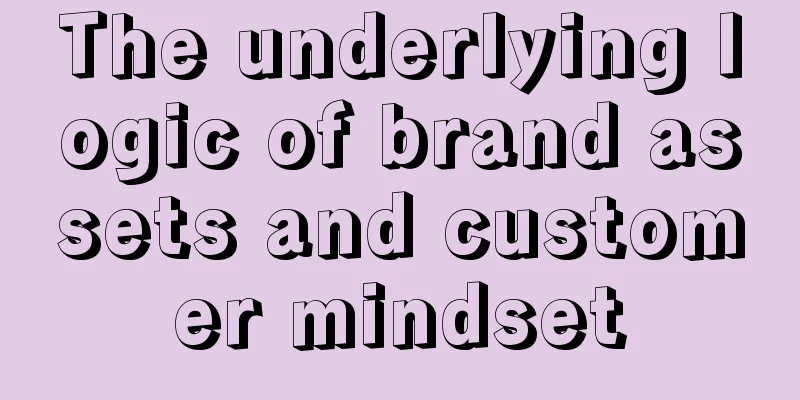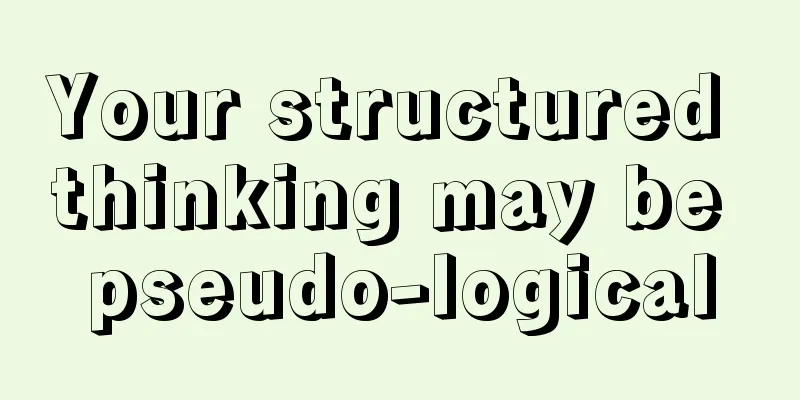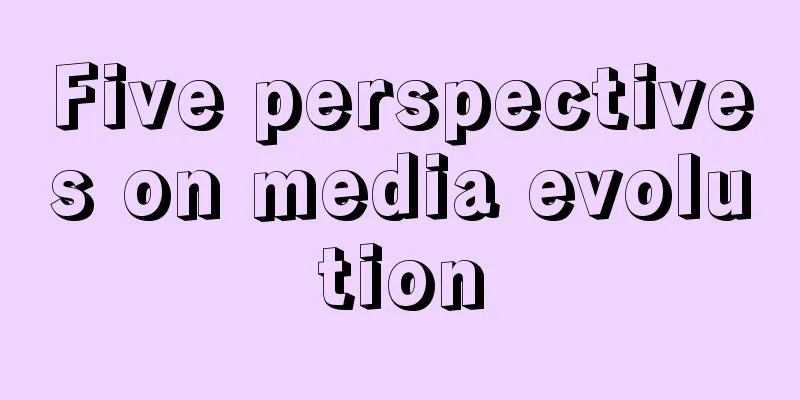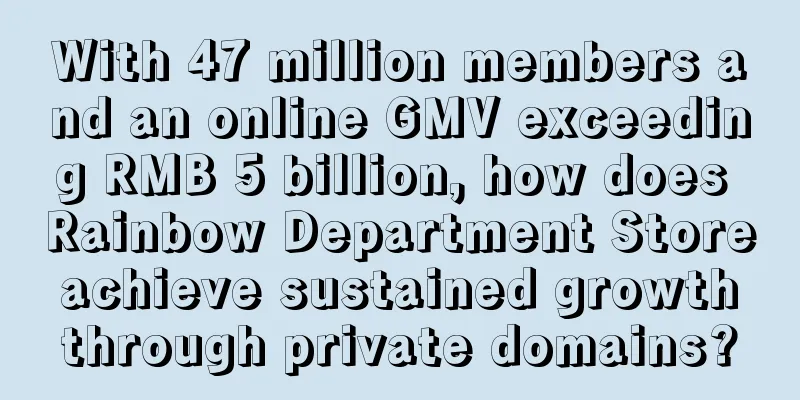The underlying logic of brand assets and customer mindset

What is brand equity? What is customer mindset? What is the relationship between the two? How can they promote business growth? Let us analyze them one by one: 1. Cognitive deconstruction of brand assets1. Core indicators of brand equityThere are many concepts of brand assets. Generally, brand assets refer to the value and influence of a brand in the market. Brand equity has two core indicators: mind share and market share. They are the core indicators for measuring a company’s market value and market position. The former is a strategic indicator, while the latter is an outcome indicator. People are the sum of all social relations. Similarly, brands are the sum of all social relations. Among them, the most important social relations are the public mind and the customer mind. In the minds of the public, a brand consists of two important components: knowledge and recognition. In the minds of customers, a brand consists of four important components: knowledge, recognition, approval, and identification. Why does customer mind have two more contents than public mind? Mainly because customer pool = new customers + active customers + latent customers + lost customers. Among them: There are often deviations in the level of brand recognition and cognition between new customers and lost customers. At the same time, the desire of latent customers for the brand is not as good as that of active customers. Only active customers have recognition and identification with the brand, which has gone beyond recognition and cognition. 2. Logical structure of brand assetsThis diagram is divided into three logical layers:
If an enterprise has a high level of digitalization and can operate in layers based on digital products and digital customers , then the above nine operating indicators will not be difficult to obtain. In other words, we can carry out refined operations on digital brands . The commercial value of this dimensionality reduction attack is beyond words. 3. Brand asset value management1. How to build a good brand? From an economic point of view, there are two perspectives: investment and cost. In other words, if we spend 1 million on a brand in a year, how much is considered an asset? How much is considered an expense? The essence of assets is economic resources that can generate cash income. The essence of expenses is the consumption of assets or outflow from the enterprise. 2. How do you distinguish between assets and expenses? Money spent on brand-level purchase reasons that remain unchanged over a period of time is considered an asset; money spent on product-level promotional reasons that are effective over a period of time is considered an expense. In fact, we have more detailed dimensions for brand asset value management. We say that there are usually four types of customer shopping paths:
Obviously, the product market is more inclined towards market share, while the content market is more inclined towards mind share. 3. Let's look at another set of concepts: good marketing usually focuses on the four major marketing media:
This is our Grayscale's original methodology. It may not be easy to understand when you first hear it. Let us explain it again:
To explain further:
2. Cognitive Analysis of Customer MindsetThe logical structure of the customer mind Here, we give an original logical structure of customer mind. Customer mind is divided into:
These three kinds of minds correspond to three modes: settling mode, personality mode, and stress mode. 1. Customer Mindset 1: Ego MindsetIn the ego mind, customers have two main motivations when making shopping decisions:
From the perspective of brand, corresponding to these two motivations, we need to establish two major brand values and implement customer value into two systems:
As we all know, stores are the core resource in the retail industry. We have a point of view:
Going a step further:
Now it is easy for everyone to understand, right? Why did we propose the four major shopping paths and four major marketing media in the previous section? Let’s take the example of Jiro Ono, the God of Sushi: Jiro Ono can associate many keyword matrices, and these are very important memory clues in the customer's mind during shopping tasks. Therefore, brand assets require brand operations. Brand operations usually fall into two categories: mnemonics and guidance.
Then let's take a look at the emotional value and behavioral induction that Internet brands are good at. In this dimension, no matter how valuable a product is, if the customer does not feel the physical stimulation, then the value is zero. What is the underlying logic? Customers don’t need your product; they need a solution to their problem. To sell goods on a large scale, we must transform product value into customer value. Let’s roughly divide customer value into two categories: value that is easily perceived by customers and value that is difficult for customers to perceive. If it is difficult for customers to perceive the value, they will jump from the decision-making path of emotional value to the decision-making path of rational value. Even if there are memory clues in the minds of customers, they need a lot of knowledge to understand the value of the product or customer, and the decision-making path of customers will reach a dead end here. Customers can easily perceive great value, such as good appearance, half-price for the second cup, or a special display of status, and customers will feel physically stimulated. We often say that there are three major pain points in sales: first, who will buy? Second, why do you buy? Third, what do you buy? At this time, when customers are thinking about why they buy, they are dominated by emotions and are likely to impulsively complete the purchase without purpose, plan, or desire. Think about it, why is the return rate of live e-commerce so high? For brands, how can they quickly seize the minds of customers? You can search for our article: "The underlying logic of customer minds". 2. Customer Mindset 2: Self-MindsetWhen the customer's mind reaches the stage of self-mind, the customer has personality statistics. Some people are extroverts, some stay at home; some are sensitive, some are rough. Different individuals have different personality traits and, similarly, different mental models. We also simply and roughly divide a person's mental patterns throughout his life into: absorptive mind (0-6 years old), heteronomous mind (6-16 years old), egoistic mind (16-26 years old), selective mind (26-36 years old), benchmarking mind (36-46 years old), growth mind (46-56 years old) and conscious mind (after 56 years old). We have introduced it in detail in the article "The underlying logic of the master-level mental model". Anyone who can conduct brand asset management at this level in business is a business expert who understands human nature. 3. Customer Mindset 3: Superego MindsetThe customer's mind is even more complicated. Usually, good marketing must establish some kind of cognitive bias. When the customer's mind enters the superego mind, the customer's cognitive bias will be greatly reduced. In other words, it is difficult to earn money from such customers. Nothing is absolute. If you have the same superego mental model as Steve Jobs, your product innovation will be strong enough to attract this type of customers and still pay a high brand premium. The mental content of this type of customers is too complex, and the two articles "The Underlying Logic of Grayscale Mindful Leadership" and "The Underlying Logic of Zen Wisdom and Innovation" have specifically interpreted it. 3. The underlying logic of performance growth1. Core capabilities for performance growthWe say: Performance growth = strategic capability × organizational capability
You may have a question here: how come there is neither brand equity nor customer mindshare in the performance growth? The difficulty in running a business lies in using a tree structure to reflect network thinking in linear business operations. That is to say, we can follow the brand strategy and brand management, or the customer strategy and customer operation, and we can carry out business actions along these linear lines to implement the network thinking corporate strategy into business results. 2. Brands and customers, how to promote performance growth?A brand is more than just a brand asset, and a customer is more than just the customer mind. How can we look at the relationship between a brand and a customer at a higher level? In the above picture, customer value can be roughly divided into: transaction value, interaction value and asset value. If we break it down a little more finely, we can get the nine dimensions of the relationship between the brand and customers: occasional customers, traffic customers, channel customers, event customers, interest customers, trust customers, scenario customers, product type customers, and brand customers. In other words, when a brand wants to build a traffic pool and a customer pool, we have the above 9 dimensions to start with. On the other hand, we have to ask ourselves whether we are too obsessed with product management and whether there is still a lot of room for performance growth in terms of traffic operation and customer operation? We also need to ask ourselves: Why can't we have homogenized products, differentiated traffic, or differentiated content, or differentiated customers? If we can, can we use the framework of the above picture to think in a network and then expand it linearly? 3. What are the linear development strategies for brands and customers?Then we also give a simple and rough formula: Customers = accidental customers + traffic customers + relationship customers + behavior-induced customers + memory-inspired customers + two-way screening customers + mental pre-sale customers
Wouldn’t this greatly enhance operability and measurability? As long as the team’s capabilities are appropriate, wouldn’t it be possible to achieve results? IV. SummaryMany times, we spend a lot of money on marketing, but the performance is not good. One of the important reasons is that we spend money on brand expenses instead of brand assets. Buying traffic and relying on product mechanisms for promotion are typical variable costs. This kind of cost cannot be shared. There is neither scale effect nor long-term benefit. The construction and management of brand assets is to solve the problem of long-term low-cost customer acquisition, or to increase the premium of a customer's single purchase, or to increase the customer's lifetime commercial value. There are two core indicators of brand equity: mind share and market share. The former is the cause and a strategic indicator, while the latter is the result and an outcome indicator. If invention patents, technical know-how, product innovation, and channel monopoly are all considered pre-competitive advantages, then when our products become homogeneous, brand assets become post-competitive advantages. This moat advantage can be reflected in content differentiation, customer differentiation, or in category monopoly, brand monopoly, or in leading business models. In addition to brand assets, we also need to seize the minds of customers. Here we must get rid of a misunderstanding: customer mind is only one of the key success factors in customer strategy and customer operations, not the only one. The most important thing is to establish a marketing system of traffic pool, content pool and customer pool that adapts to the current development status of the enterprise. Let’s review: Performance growth = strategic capability × organizational capability We use brand assets and customer mindsets to enhance strategic capabilities; and use traffic pools, content pools, and customer pools to enhance organizational capabilities. Let us win with our advantages and core competitiveness. Author: Cao Sheng, public account: Grayscale Cognitive Society |
<<: 520 is quiet. How can brands that cannot sell love do “reverse marketing”?
>>: 520 high-level copywriting, every sentence is love
Recommend
Can Shopee open a store on behalf of someone else? How long does it take to close the store?
As the Shopee platform continues to grow, more and...
100,000 people watched the auction. How did Sprite, which was founded in 1982, use old tricks to create new growth on Douyin?
The once popular online meme "Sprite in 1982&...
The best private domain looks like: there are catering membership cards with hundreds of millions of sales
This article introduces how to expand the micro-sh...
eBay adds quick setup feature for advanced promotional listings
eBay recently announced the launch of a quick setu...
New Year's Tips: Marketing and Communications from "Experience" to "Science"
In the digital marketing era, marketing and commun...
Tencent has made another big move
In the upcoming 2025 New Year Goods Festival, Tenc...
A 100,000+ hit-making machine, why is @小糖糖女士 so popular on Video Account?
Maternal and childcare has always been a hot track...
Does Amazon's change of main image affect the weight? Is it necessary to change it?
Amazon is also an e-commerce platform. For merchan...
What are the requirements for joining the Shopee cross-border e-commerce platform? What is the process?
Today, I will introduce you to the content of open...
Which country is the best for eBay? Which site is the best for eBay?
eBay is a global e-commerce platform where individ...
What are the standard sizes for Amazon parts? What if they are out of standard?
On Amazon, the world's largest e-commerce plat...
Douyin Double Eleven, anchors "share" Li Jiaqi
It’s the Double Eleven Festival on Douyin again. H...
Frisbees have been "abandoned", why has cycling become so popular?
What is your favorite way to relax? Nowadays, more...
During the Spring Festival holiday, are your friends and family surrounded by skits?
During the Spring Festival, short plays have becom...
Which international logistics company is the cheapest? Detailed analysis
Sometimes we do cross-border business or go abroad...









